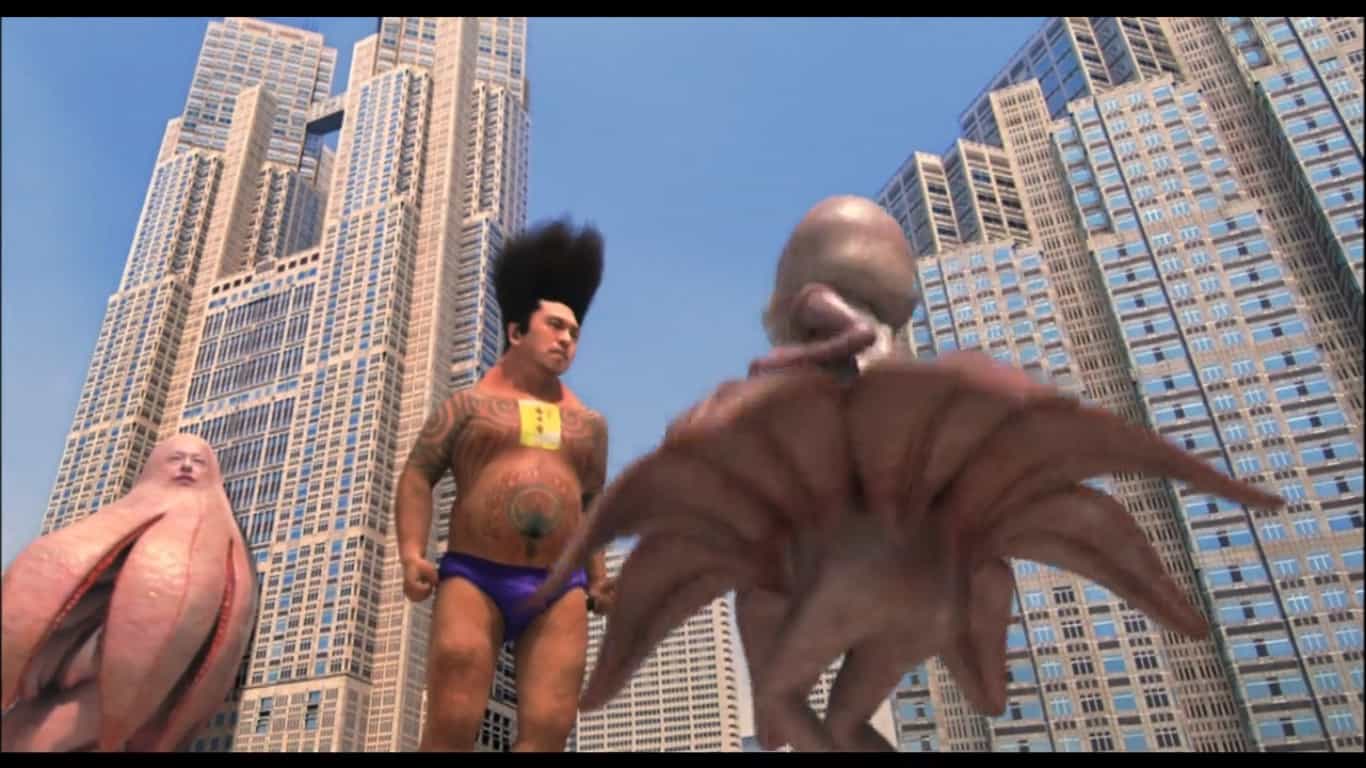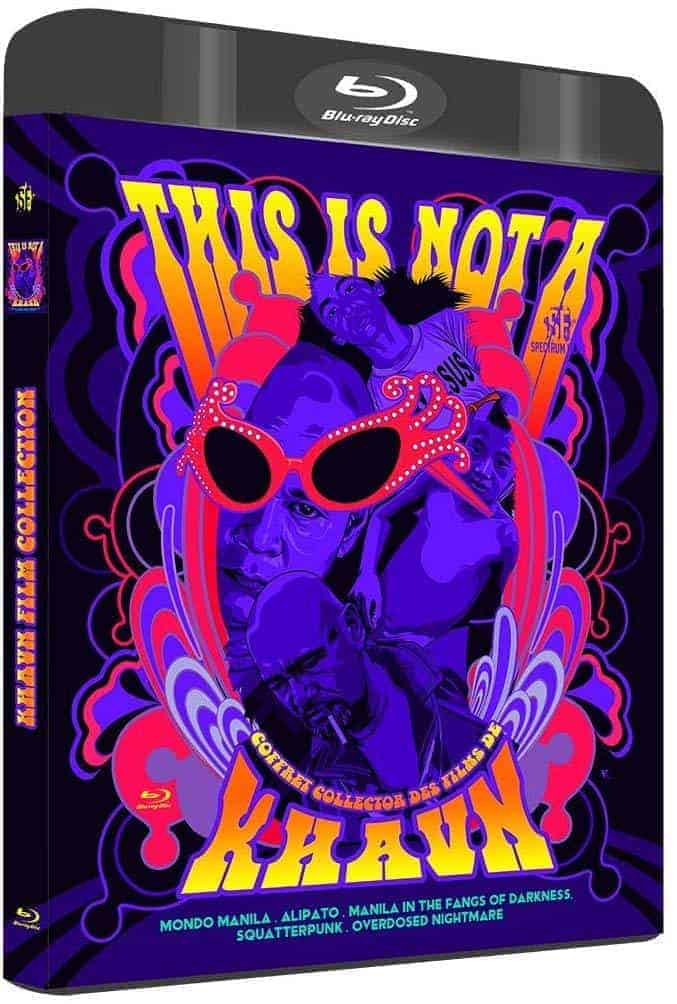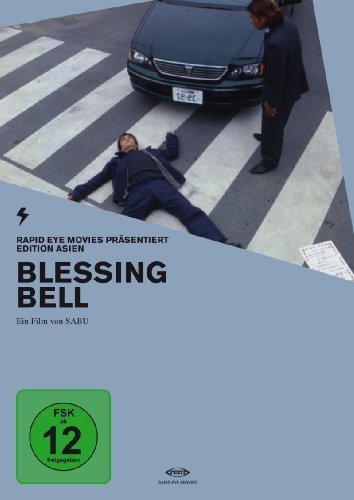If there was ever a region that included themes, characters and motifs that occasionally surpassed even the borders of the surreal, that would be Asia, with the titles that can be easily described as absurd coming out in scores. Maybe it has to do with a particular type of idiosyncrasy, maybe that in a number of countries, particularly in Japan and India, filmmakers feel the freedom to express themselves in any way they want, away from any kind of political correctness or even cinematic “rules”. A number of these movies have already garnered the title of cult, but as we are about to see in this particular list, titles from the whole spectrum of cinema can be found here. Without further ado, here are 40 movies that definitely deserve the title of weird, in alphabetical order.
PS. The focus on Japanese films was inevitable…
1. A Man Vanishes (Shohei Imamura, 1967, Japan)

This is the closing line in Imamura's relentless dive into the depths of human psyche, filmed in the form of a cinema vérité pseudo-documentary regarding the disappearance of Oshima Tadashi, a Japanese plastics salesman. The film is taking place during the mid 60's, chronologically. In a way, Imamura keeps reminding us this line throughout his identical double closing sequence that depicts a really intense verbal conflict between two sisters who are connected with the aforementioned missing man. During these final 30 minutes, he, somehow, feels the urge to clarify that we are watching a dramatization of these events throughout his cinematic quest. A quest which feels real, but then again it's hard to define between which layers of reality it is moving. Thus, every single time I get the chance to watch Imamura's filmic experiment I find myself asking this very question: who is really ‘lost' here and what are we really looking for? Are we in search of a vanished man, a potentially dead man, a person who found the will to break his ‘chains' or the examination of a social phenomenon? Possibly all of the above and obviously much more than that. (Nicholas Poly)
Buy This Title
on Amazon by clicking on the image below
2. Alipato: The Very Brief Life of an Ember (Khavn, 2016, Philippines)

Khavn directs and pens a truly chaotic film, that seems more like a collage of his extreme thoughts than an actual film. However, here lies his biggest trait, since, through all that images and absurd sequences, he manages to tell a story quite clearly, despite the evident surrealism. Furthermore, music is almost constant in the movie, frequently making it look like an extreme music video, much like Sogo Ishii's “Burst City.” although in a more contemporary way. In that fashion, the film's music plays a very important role, and Brezel Göring and Francis de Veyra do a great job in the score and in the arrangement of the various tracks, which are composed by Khavn, Bing Austria and others. (Panos Kotzathanasis)
Buy This Title
on Amazon by clicking on the image below
3. Beast in Love (Koji Shiraishi, 2020, Japan)

To begin with, as also mentioned in the prologue, this is a film that demands from its viewer a certain knack for absurdity, extreme violence and humor, which are presented through a combination that can be rather offensive, if the viewers take what they see seriously. What Shiraishi actually tries to do is mock a number of genre and cult concepts, with the movie including elements of western, romance, crime, not to mention serial killers, killers for hire and a werewolf. As soon as Shohei Eno appears on screen however, the fact that Shiraishi does not take seriously either the story or his protagonists, becomes rather evident, with the extremity, in this case, aiming at absurd humor. One could say that the mocking seems to point towards Tarantino style, including “From Dusk till Dawn” but eventually, the absurdity is what takes over. (Panos Kotzathanasis)

4. Big Man Japan (Hitoshi Matsumoto, 2007, Japan)

The film could be characterized as a mockumentary of the everyday life of Japanese working class. Nevertheless, the outrageous notions included, as the sexually voracious monsters and the general appearance of the superhero, dismantle every notion of seriousness and coherence, thus resulting in an utterly uncategorized film. (Panos Kotzathanasis)
5. Blessing Bell (Sabu, 2002, Japan)

“Blessing Bell” is the combination of what has come to define Sabu's films, a mixture of black, absurd humor while also presenting moments of truth and depth between people sharing their lives for one brief moment. While the “punchline” of his films, as with “Blessing Bell”, might easily be the weakest link in his writing, Sabu is still one of the most interesting directors of Japan, especially because he embraces the absurdity of life like, for example, his colleague Satoshi Miki. In the end, it is all a matter of starting the journey, laugh or smile while you are walking, because sometimes the destination does not matter as much as how you got there. (Rouven Linnarz)
Buy This Title
on Amazon by clicking on the image below
6. Calamari Wrestler (Minoru Kawasaki, 2005, Japan)

Taguchi is the biggest star of Japanese wrestling. However, during his moment of triumph when he wins the championship match, an uncanny half calamari-half human creature appears and defeats him. Later on, the creature proves to be an ex-champion named Kanichi Iwata, who had retired from the sport due to a terminal illness. Nevertheless, he eventually managed to get over it by transforming into a calamari. Even in a cinema where incoherence is regularly the rule, Kawasaki definitely stands out due to his preposterous themes. In this particular film, he used professional wrestlers as his protagonists and pitted the calamari against a similar octopus and a Norwegian lobster. Even more absurd is his effort to include in this madness a number of social messages and a romance. (Panos Kotzathanasis)
7. Cat Soup (Tatsuo Sato, 2001, Japan)

Mangaka Nekojiru is a rather tragic figure in the medium. Coming from the underground in such publications as Garo, the young woman took her own life the moment before her series was set to make her series gain global recognition through Tokyo Electric opting to use the character for promotional material. The work, understandably, could be uncomfortably dark but the talent of the mangaka is shown through to make her a beloved, yet enigmatic figure, in the manga world. Tatsuo Sato adaptation of her work certainly embraces the dark themes and surrealism of the series. The film from beginning to end is a really abstract exploration of difficult themes and really feels like the conveying of a tortured soul expressing themselves through art. (Adam Symchuk)
8. Dead Sushi (Noboru Iguchi, 2012, Japan)

This emerges as an incredibly fun and goofy splatter comedy. Among the better qualities is the fact that there's plenty of fun in how it tackles the extreme concept. This one gets a lot of mileage out of sushi preparation and the extreme lengths people go to in order to make it serviceable to others. it is an incredibly goofy concept in general, focusing on her exacting processes and martial arts training, which is where it really goes overboard with the silliness. That carries over into the central premise of selling the idea that reanimated sushi are capable of going on a rampage and eating people alive. This provides the film with plenty of strong action, from the opening attack on the couple to the first attacks on the staff at the hotel, where the reanimated pieces begin flying around grabbing everyone, and there's a sense of fine cheese on display that continually appears.
Buy This Title
on Amazon by clicking on the image below
9. Dorm (So Yo-hen, 2021, Taiwan)

“Dorm” is definitely a weird movie, particularly since its premises occasionally seem like those of a horror movie. At the same time, however, the experimental approach is quite eloquent in the social issues So Yo-hen wanted to portray, and through its uniqueness, truly reinvigorating for the whole genre of documentary. (Panos Kotzathanasis)
10. Dragonfly Eyes (Xu Bing, 2017, China)

Xu Bing, a visual artist, started collecting surveillance videos and footage from the cloud. He collected a huge amount of material, and tailored them together to tell a story. The heroes of the story are Qing Ting and Ke Fan, which are played by different, unsuspected individuals who have been caught on surveillance cameras. Xu Bing added voice acting and, with the help of foley artists, filled the narrative with sounds, since the surveillance cameras rarely record sound, just image. (Panos Kotzathanasis)






















FYI, I think that Ghua Chang Fou is more commonly spelled Ghya Chang Fou.
Also, I’m not trying to be “that guy” but I recommend checking out Kanai Katsu and Shuji Terayama’s films if you’re into weird cinema. In fact, a lot of ATG’s output might be something you enjoy.
Sounds good, we will check